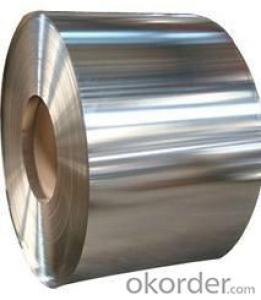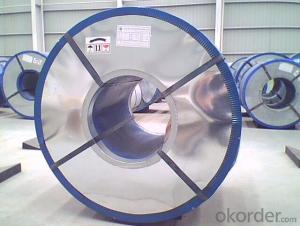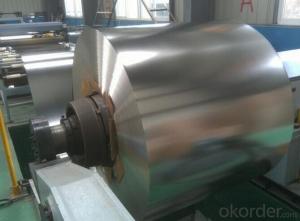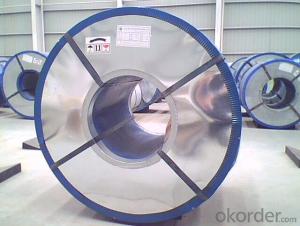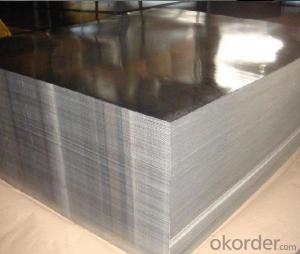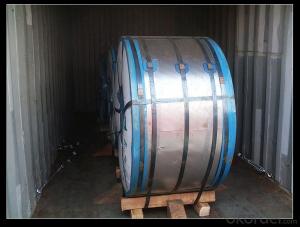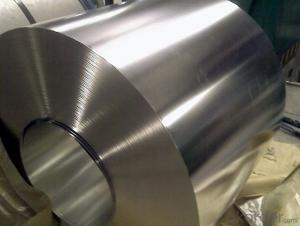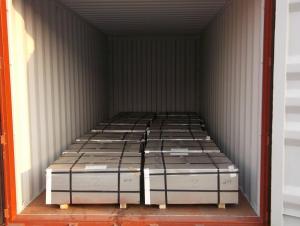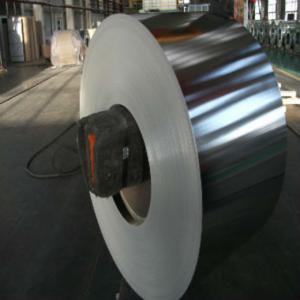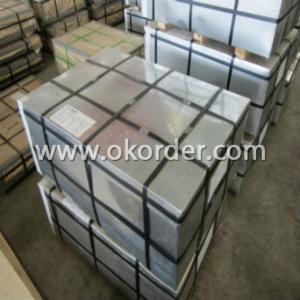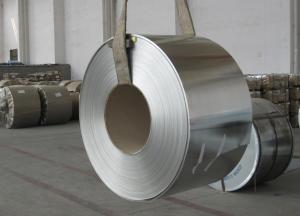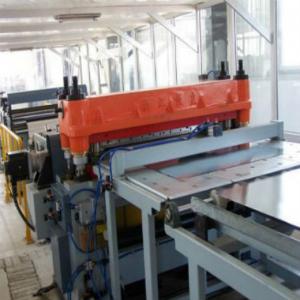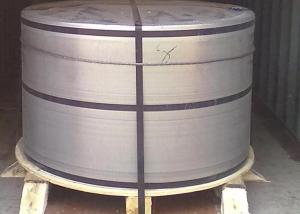Electrolytic Tinplate in Coils for Foods Packing
- Loading Port:
- Tianjin
- Payment Terms:
- TT OR LC
- Min Order Qty:
- 25 m.t
- Supply Capability:
- 7000 m.t/month
OKorder Service Pledge
OKorder Financial Service
You Might Also Like
1.Structure of Electrolytic Tin Plate Coils and Sheets for Foods Metal Packaging Description
Electrolytic Tin Plate Coils and Sheets for Foods Metal Packaging, is one thin steel sheet with a coating of tin applied by electrolytic deposition. Tinplate made by this process is essentially a sandwich in which the central core is strip steel. This core is cleaned in a pickling solution and then fed through tanks containing electrolyte, where tin is deposited on both sides. As the strip passes between high-frequency electric induction coils, it is heated so that the tin coating melts and flows to form a lustrous coat.
2.Main Features of the Electrolytic Tin Plate Coils and Sheets for Foods Metal Packaging
Appearance – Electrolytic Tin Plate is characterized by its beautiful metallic luster. Products with various kinds of surface roughness are produced by selecting the surface finish of the substrate steel sheet.
Paintability and printability – Electrolytic Tin Plates have excellent paintability and printability. Printing is beautifully finished using various lacquers and inks.
Formability and strength – Electrolytic Tin Plates have got very good formability and strength. By selecting a proper temper grade, appropriate formability is obtained for different applications as well as the required strength after forming.
Corrosion resistance – Tinplate has got good corrosion resistance. By selecting a proper coating weight, appropriate corrosion resistance is obtained against container contents. Coated items should meet 24 hour 5 % salt spray requirement.
Solderability and weldability – Electrolytic Tin Plates can be joined both by soldering or welding. These properties of tinplate are used for making various types of cans.
Hygienic – Tin coating provides good and non toxic barrier properties to protect food products from impurities, bacteria, moisture, light and odours.
Safe – Tinplate being low weight and high strength makes food cans easy to ship and transport.
Eco friendly – Tinplate offers 100 % recyclability.
Tin is not good for low temperature applications since it changes structure and loses adhesion when exposed to temperatures below – 40 deg C.
3.Electrolytic Tin Plate Coils and Sheets for Foods Metal Packaging Images
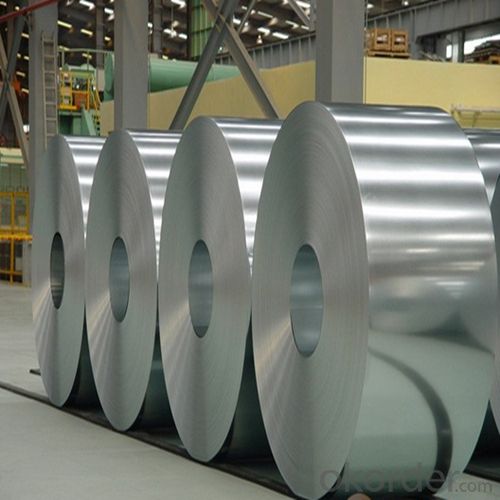
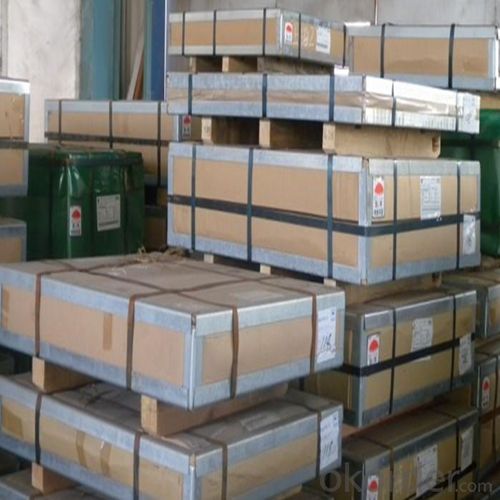
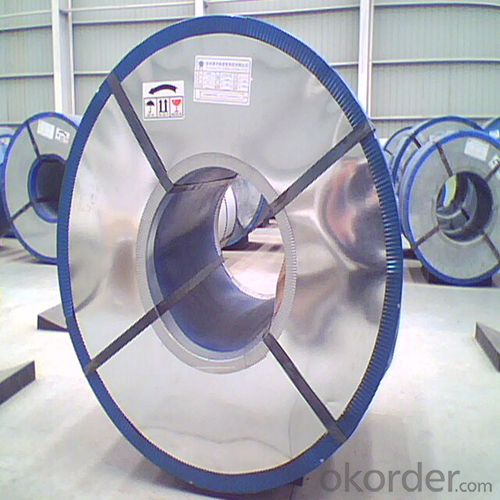
4.Electrolytic Tin Plate Coils and Sheets for Foods Metal Packaging Specification
Standard | ISO 11949 -1995, GB/T2520-2000,JIS G3303,ASTM A623, BS EN 10202
|
Material | MR,SPCC |
Thickness | 0.15mm - 0.50mm |
Width | 600mm -1150mm |
Temper | T1-T5 |
Annealing | BA & CA |
Coil Inner Diameter | 508mm |
Weight | 6-10 tons/coil 1~1.7 tons/sheets bundle |
Passivation | 311 |
Oil | DOS |
Surface | Finish,bright,stone,matte,silver |
5.FAQ of Electrolytic Tin Plate Coils and Sheets for Foods Metal Packaging
-How to place .an order or contact you ?
Please send us Email. we will give you a quick response in seconds .
- How is your quality ?
All our quality is prime even the secondary quality . We have many years experience
In this field with serious quality control standard . Advanced equipment, We welcome your visit to our factory .
- Q: Can tinplate be used for promotional or gift packaging?
- Yes, tinplate can be used for promotional or gift packaging. Tinplate is a versatile material that can be shaped into various sizes and designs, making it suitable for creating eye-catching and customized packaging solutions. Its durability and ability to retain its quality over time also make it a popular choice for promotional or gift packaging, ensuring that the product inside remains protected and visually appealing.
- Q: How does tinplate contribute to the safety and integrity of packaged products?
- Tinplate contributes to the safety and integrity of packaged products in several ways. Firstly, tinplate is highly resistant to corrosion, protecting the packaged products from exposure to moisture and other potentially harmful elements. This corrosion resistance ensures that the packaging remains intact, preventing any leakage or contamination of the product. Additionally, tinplate has excellent barrier properties, which means it effectively blocks out oxygen, light, and other external factors that could cause spoilage or degradation of the packaged goods. Furthermore, tinplate provides a strong and sturdy structure for packaging, ensuring that it can withstand transportation and handling without compromising the integrity of the product. Overall, tinplate's properties make it a reliable and protective material for packaging, thereby contributing to the safety and preservation of packaged products.
- Q: How is tinplate coated with tin?
- Tinplate is typically coated with tin through a process called electroplating, where a thin layer of tin is deposited onto the surface of the tinplate using an electric current. This electroplating process helps to protect the iron or steel base of the tinplate from corrosion and also provides a smooth, shiny finish.
- Q: Can tinplate be used for high-speed packaging lines?
- Yes, tinplate can be used for high-speed packaging lines. Tinplate, which is a thin steel sheet coated with a layer of tin, offers excellent strength and durability, making it suitable for fast-paced packaging operations. Its smooth surface allows for easy printing and labeling, while its corrosion resistance ensures the longevity of packaged goods. Additionally, tinplate's ability to withstand high temperatures and its recyclability make it a popular choice for high-speed packaging lines in various industries such as food and beverage.
- Q: What are the main differences between tinplate and tinplate laminates in terms of barrier properties?
- Tinplate and tinplate laminates differ in terms of their barrier properties. Tinplate, which is made of a single layer of tin-coated steel, offers good barrier properties against moisture and gases. It provides a reliable protective barrier for food and beverage packaging. On the other hand, tinplate laminates consist of tinplate combined with other materials, such as plastic or paper. These laminates can enhance the barrier properties of tinplate, offering additional protection against light, oxygen, and other external factors. The use of laminates allows for customized packaging solutions that cater to specific product requirements. Overall, tinplate laminates provide a higher level of barrier protection compared to plain tinplate.
- Q: Can tinplate packaging be used for aerosol products?
- Yes, tinplate packaging can be used for aerosol products. Tinplate is a commonly used material in aerosol can production due to its durability, resistance to corrosion, and ability to withstand the pressure exerted by aerosol content. Additionally, tinplate cans can be easily shaped and decorated, making them suitable for various aerosol products in the market.
- Q: How does tinplate perform in terms of odor resistance?
- Tinplate performs well in terms of odor resistance due to its non-reactive and impermeable nature, which prevents the absorption and transmission of odors.
- Q: How is tinplate coated for aerosol cans?
- Tinplate is coated for aerosol cans through a process called electrolytic tin coating. In this process, a thin layer of tin is deposited onto the surface of the tinplate by immersing it in a bath of tin solution. The tin coating provides a protective barrier against corrosion and ensures the cans remain durable and airtight.
- Q: What's the advantage of metal containers in packing tea?
- Aluminum cans are exquisite. Well done! That's a relatively high cost.3: tin cans cost even higher. Tin can hold tea for hundreds of years. Firm, able to sculpt, and end as a work of art.
- Q: Does tinplate corrode over time?
- Yes, tinplate can corrode over time due to exposure to moisture, oxygen, and other corrosive elements. However, the corrosion rate of tinplate is relatively slow compared to other metals, thanks to the protective layer of tin that covers the steel base. Regular maintenance and proper storage conditions can help slow down the corrosion process.
Send your message to us
Electrolytic Tinplate in Coils for Foods Packing
- Loading Port:
- Tianjin
- Payment Terms:
- TT OR LC
- Min Order Qty:
- 25 m.t
- Supply Capability:
- 7000 m.t/month
OKorder Service Pledge
OKorder Financial Service
Similar products
Hot products
Hot Searches
Related keywords
